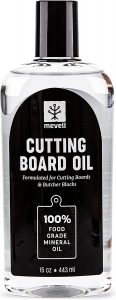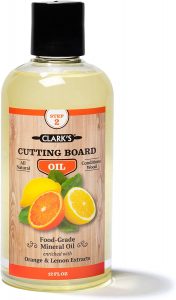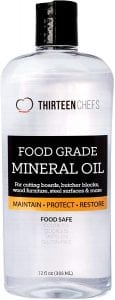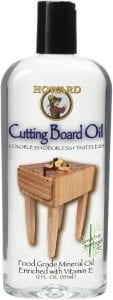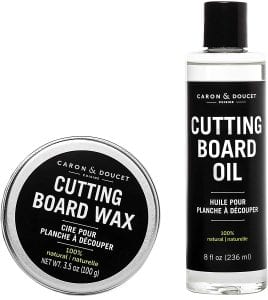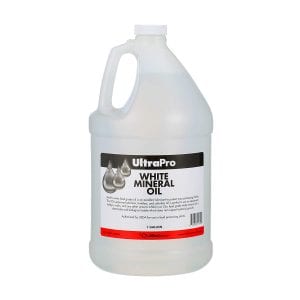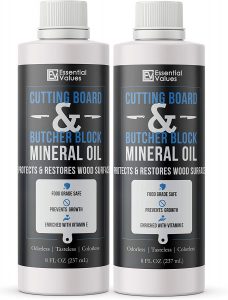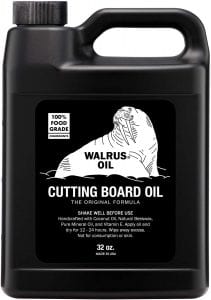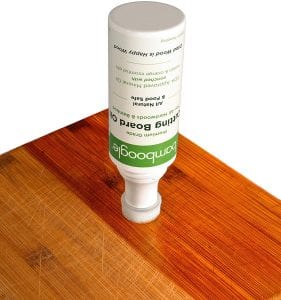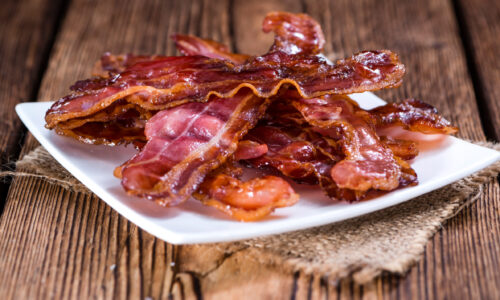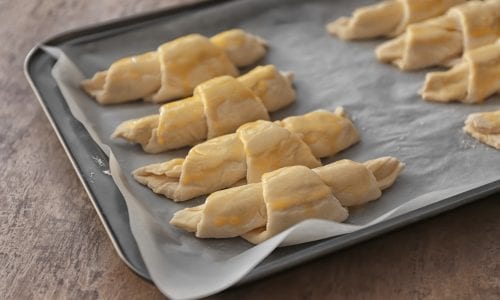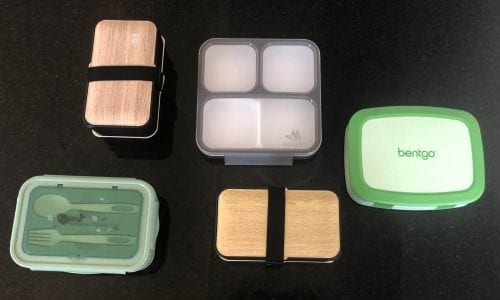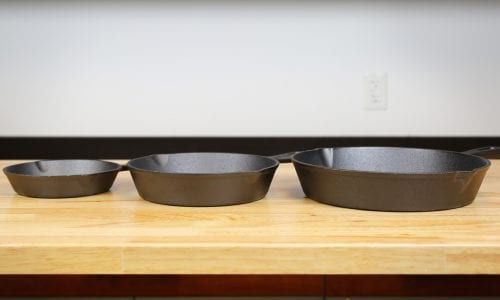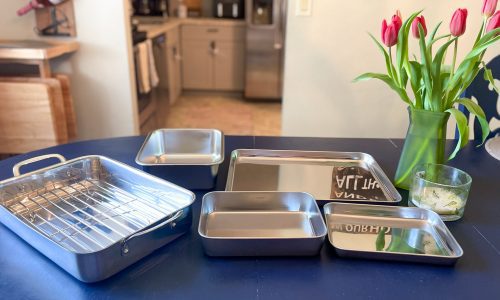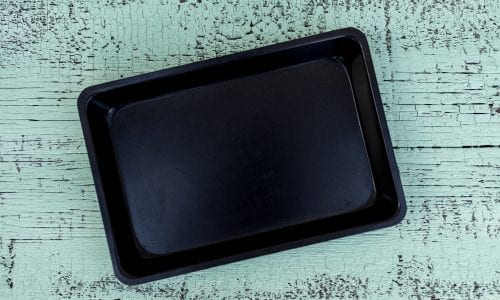The Best Cutting Board Oil
We looked at the top 12 Cutting Board Oils and dug through the reviews from 32 of the most popular review sites including and more. The result is a ranking of the best Cutting Board Oils.
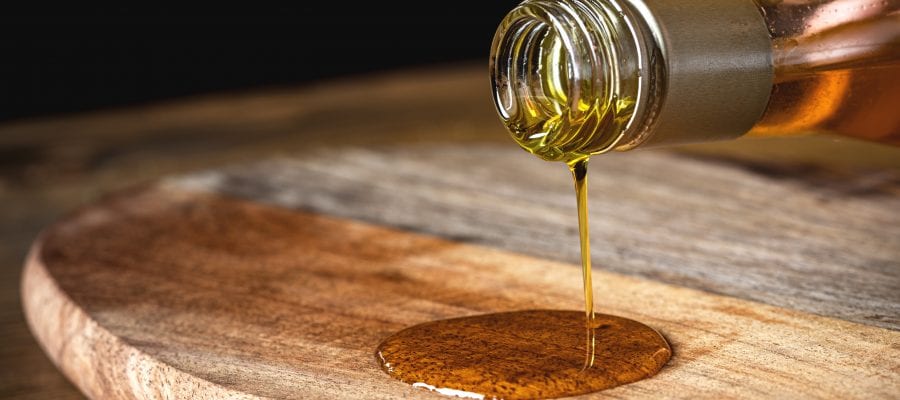
Our Review Process
Don't Waste Your Money is focused on helping you make the best purchasing decision. Our team of experts spends hundreds of hours analyzing, testing, and researching products so you don't have to. Learn more.
Our Picks For The Top Cutting Board Oils
- 1. Mevell Fast Absorbing Restorative Cutting Board Oil
- 2. CLARK’S All Natural 3-Step Cutting Board Oil
- 3. Thirteen Chefs Food Grade Mineral Cutting Board Oil
- 4. John Boos MYSB NSF Certified Butcher Block & Cutting Board Oil
- 5. Howard Products BBB012 Food Grade Cutting Board Oil
- 6. Caron & Doucet Coconut Based Cutting Board Conditioning Oil Set
- 7. UltraSource UltraPro Unscented Cutting Board Oil
- 8. Essential Values Mineral Butcher Block & Cutting Board Oil, 2-Pack
- 9. WALRUS OIL Food-Safe Butcher Block & Cutting Board Oil
- 10. Greener Chef No Mess Bamboo Cutting Board Oil Spray
- 11. Bamboogle Food Grade Restorative Cutting Board Oil
- 12. Bayes High-Performance Food Grade Mineral Wood & Bamboo Cutting Board Oil
Use this food-grade cutting board oil to both restore wood and prevent it from becoming dried out in the future. It's constructed using 100 percent mineral oil and is easy to apply. Should you have any oil leftover, you'll find it's also safe for use on granite, marble and stainless steel.
Protects Long TermYou'll get a full 15 ounces when you opt for this cutting board oil, which is 3 ounces more than other brands on the market.
Grab this cutting board oil if you enjoy a refreshing citrus scent. The formula includes both lemon and orange essential oils, but utilizes mineral oil as the main ingredient. Once you apply the oil to the board, it becomes less likely to crack or dry out. Repeat use once per month for the best results.
Pleasant Citrus ScentUse this cutting board oil on everything from bamboo plates to wooden salad bowls.
This food-grade, high-quality mineral oil is ideal for wooden cutting boards, countertops, utensils and more. The squeeze bottle and application cap make it easy to use. It can also be used on granite, knives and garden equipment.
User-Friendly Applicator CapThis cutting board oil is easy to apply without any mess or drips.
You can prevent cracking and drying with this deep-penetrating cutting board oil. It works well on butcher's blocks, countertops and other wooden items. It's made with strict controls and doesn't have any contact with common allergens.
Deep-Penetrating OptionThis cutting board oil goes into the wood's pores to bring out the board's natural color.
Buying Guide
Whether you’re a professional chef or a beginner cook, a wooden cutting board is an essential kitchen item. Not only are wooden cutting boards versatile cooking tools, they also bring a rustic aesthetic to the kitchen. In order to keep your wooden cutting board in good shape for a long time, it’s important to use a cutting board oil on it.
Keep in mind that you cannot use your cooking oils on your wooden cutting board. You may keep olive oil, vegetable oil or avocado oil in your kitchen for cooking, but you’ll need to add a different oil to you pantry specifically for your cutting board.
Mineral oils are the best choice for cutting boards because they are odorless, flavorless and colorless. The cooking oils in your pantry become rancid when they are exposed to oxygen, so they are not a good choice for spreading over your cutting board. Mineral oils, on the other hand, are resistant to oxidation. This means that when they come in contact with oxygen or water, they will not spoil.
If you don’t use a cutting board oil on your wooden cutting board, it’s likely that the board will become dry and splintered. Wood is naturally porous, so it absorbs the oil you rub on it. The oil keeps the wood soft and supple, adding a glossy sheen to your cutting board, and it acts as a mild water repellent, ensuring that the board doesn’t warp, split or build up a layer of bacteria.
Using cutting board oil on your wooden cutting board also ensures that it doesn’t stain. Some foods, like beets or wine, can permanently stain your wood, so the oil helps to keep it looking clean.
Why we recommend these cutting board oils?
Products Considered
Products Analyzed
Expert Reviews Included
User Opinions Analyzed
Our experts reviewed the top 12 Cutting Board Oils and also dug through the reviews from 32 of the most popular review sites including and more. The result is a ranking of the best of the best Cutting Board Oils.
DWYM is your trusted roduct review source. Our team reviews thousands of product reviews from the trusted top experts and combines them into one easy-to-understand score. Learn more.
The Best Bang For Your Buck
Howard Products BBB012 Food Grade Cutting Board Oil
Key Takeawy
You can prevent cracking and drying with this deep-penetrating cutting board oil. It works well on butcher's blocks, countertops and other wooden items. It's made with strict controls and doesn't have any contact with common allergens.
What other experts liked
What to Look For
- When you’re looking for a cutting board oil to add to your kitchen pantry, pay attention to the type of oil. Always opt for a food-grade mineral oil, and avoid any natural oils such as corn, olive, peanut or vegetable. These oils will eventually start to oxidize and will release a foul smell as they go rancid.
- Keep in mind that you also should not use mineral oil that is not food-grade, as it is not safe to use in the kitchen. Food-grade mineral oil is always flavorless, odorless and colorless, so it will not affect the taste of the food you chop on the cutting board.
- If you have any food allergies in your family, be sure to check that the mineral oil has not come into contact with any allergens, such as peanut oil or walnut oil.
- While food-grade mineral oils are great for cutting boards, you can also use them elsewhere in your kitchen. Many cutting board oils are perfect for oiling up wooden countertops or butcher’s blocks, salad bowls, utensils and other items.
- If you want to avoid a slippery mess in your kitchen, opt for a cutting board oil bottle that is easy to open, pour and use. This way, you won’t end up with drips along your bottle or countertop. Look for a squeeze bottle or a push applicator cap, as these will provide ease of use.
- Not all cutting board oils have the same instructions. Be sure to read the directions carefully before using so you’ll know to apply the right amount of oil for the right amount of time.
More to Explore
Before you oil your cutting board, it’s important to ensure it’s clean. Give your wooden cutting board a soapy wash and then let it air dry. Remember: Never run your wooden cutting boards through the dishwasher.
Once the board is completely dry, pour the desired amount of oil onto the cutting board. With a clean dishcloth, rub the oil into the board. You can use a circular motion or rub in the direction of the grain of the wood. Make sure to rub oil into all sides of the board.
Follow the instructions on the bottle and leave the oil on the board for the specified length of time. Then wipe off the excess oil. Let the cutting board sit overnight to reap all of the benefits of the oil. After that, it will be ready to use.

